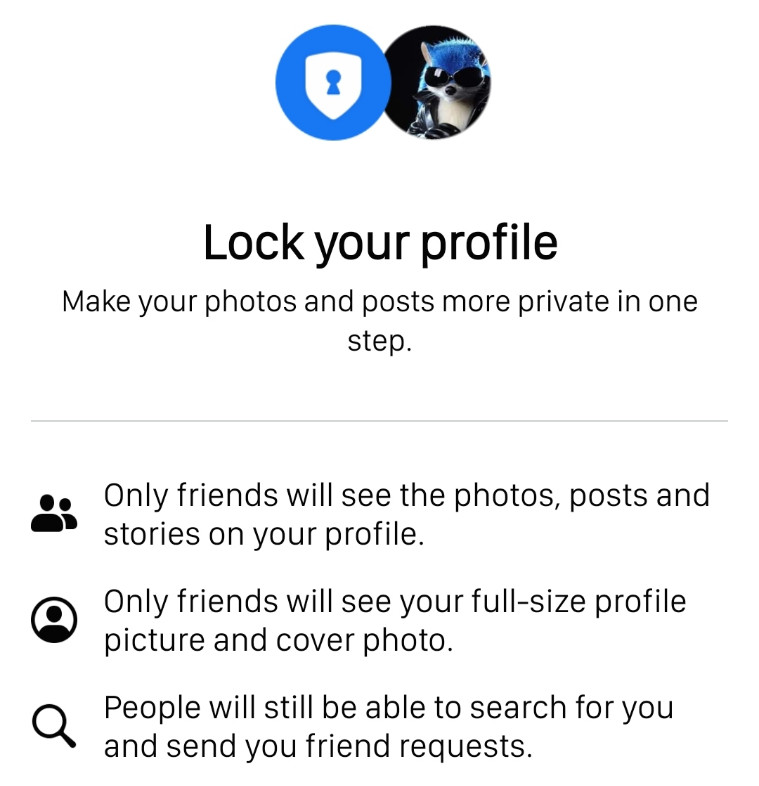[ad_1]
Facebook is nearly 18 years old, and while it might be too boring for Gen Z, the social network still has nearly 3 billion monthly active users. With such a large user base and the fact that Facebook is well-known for privacy issues, it’s important to exercise diligence to keep your data – such as your photos and contact information – safe and secure. Fortunately, Facebook has plenty of built-in tools to aid you in doing so. You can limit who sees your posts on the platform and a lot more. We’ve listed these measures below.
Limit who can see your posts
Facebook offers a number of ways to keep some or all of your posts private. To change who gets to see your posts, just tap on the text field on your Facebook home that lets you create a fresh post. There, under your name, you’ll see a menu which usually defaults to ‘Friends.’ Tapping it will allow you to change the post audience to something else. For example, a ‘Public’ post can be seen by anyone on or off Facebook.
You can also use the feature to either show your post to certain people or hide it from certain people. But if you wish for even more granular control, then ‘Custom’ will suffice.
Lock your profile
 Locking your profile restricts your profile picture and cover photo from being accessible to strangers
Locking your profile restricts your profile picture and cover photo from being accessible to strangers
By default, your Facebook profile and a larger chunk of its information are visible and accessible to stalkers. To change that, you’d want to lock your profile. You can lock your profile by firstly opening it up on your phone, tapping on the three-dot menu on the left, and then selecting ‘Lock profile.’
Doing so will limit visibility for all content on your profile to just your friends. It will also restrict your profile picture and cover photo from being accessed by strangers. What this means is those unknown users will no longer be able to view the full size of your profile and cover photos when they tap on it.
Limit who can send you friend requests

 You can block unknowns from sending you friend requests on Facebook
You can block unknowns from sending you friend requests on Facebook
If you are receiving a lot of friend requests from unknown people to the point it’s gotten annoying, you can block unknowns from sending you those. This can be done by firstly heading to the three-bar menu on the far right of the Facebook app’s navigation, then expanding the Settings & privacy menu.
Next, tap on Settings, scroll down to Audience and visibility, and select “How people find and contact you.” Here you can choose between receiving friend requests from everyone or friend requests from friends of friends.
Check where you are logged in
Logged in to a borrowed device and forgot to log out? Suspect someone’s sneakily accessing your account? The first thing you’d want to do in either of those cases changes your password. But if you wish to determine where you are logged in or who’s been accessing your account, then Facebook offers a feature to help you do so.
Open up Facebook settings, head to password and security, and you’ll find a list showing all the devices you are logged in on and their location. You can proceed to remove the suspicious ones from the list.
Block apps from accessing your Facebook data
If you’ve ever used Facebook as a login method into an app, game, or website, then it’s likely that you were asked to grant access to some of your information from your account. While Facebook does expire those permissions on its own after 90 days of inactivity, you can block access sooner than that. Note that the following steps can only be performed through FB’s desktop site.
1. Click on your profile picture on the top right of Facebook
2. Select Settings & privacy, then Settings
3. Click Privacy in the menu on the left, then select Blocking
4. Click Edit in the Block apps section
5. Here you can add apps and games to a blocklist
!function(f,b,e,v,n,t,s)
{if(f.fbq)return;n=f.fbq=function(){n.callMethod?
n.callMethod.apply(n,arguments):n.queue.push(arguments)};
if(!f._fbq)f._fbq=n;n.push=n;n.loaded=!0;n.version=’2.0′;
n.queue=[];t=b.createElement(e);t.async=!0;
t.src=v;s=b.getElementsByTagName(e)[0];
s.parentNode.insertBefore(t,s)}(window, document,’script’,
‘https://connect.facebook.net/en_US/fbevents.js’);
fbq(‘init’, ‘444470064056909’);
fbq(‘track’, ‘PageView’);
[ad_2]
Source link


